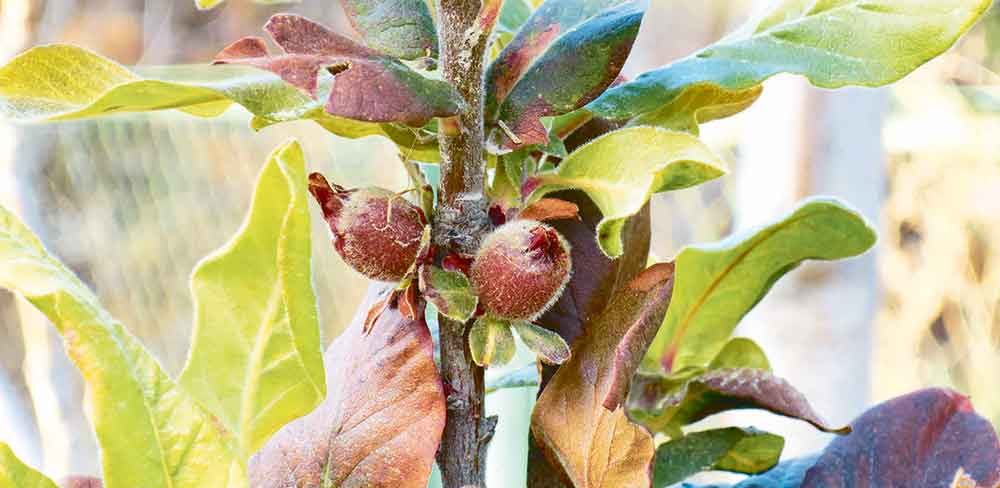In the last month of autumn, a colleague gave me an unusual fruit called Mespilus germanica, or yemshen. I knew about the tree from literature, but I have never seen it in nature. In appearance, the fruit looks like an undeveloped pomegranate, a large-fruited rosehip or a wild apple (arnap), it tastes tart, astringent like quince or unripe persimmon, but after it stays frozen for several days, it tastes as sweet as aromatic applesauce with fresh acidity and quince aftertaste.
According to botanists, in the past years the medlar grew wild in several small bushes in the South-Western Kopetdag, in the Gyuen gorge near the Chendir River in Magtymguly etrap and was one of the very rare plants. Over the past 20 years, there have been several futile attempts to find it in these places. Scientists had to admit that the species fell out of the flora of Turkmenistan. The species was studied little. It was not included in any of the three editions of the national Red Data Book, and the experiment of the cultivation of it at the Botanical Gardens was not crowned with success. Then the scientists tried to cultivate the plant with limited planting material: to accelerate the fructification of trees and preserve their varietal characteristics. In 2016, they grafted the buds taken from the Botanical Garden on the rootstock – hawthorn and pear tree cuttings. By the way, medlar is a close relative of hawthorn and has many nutritional and medical properties in common with it.

